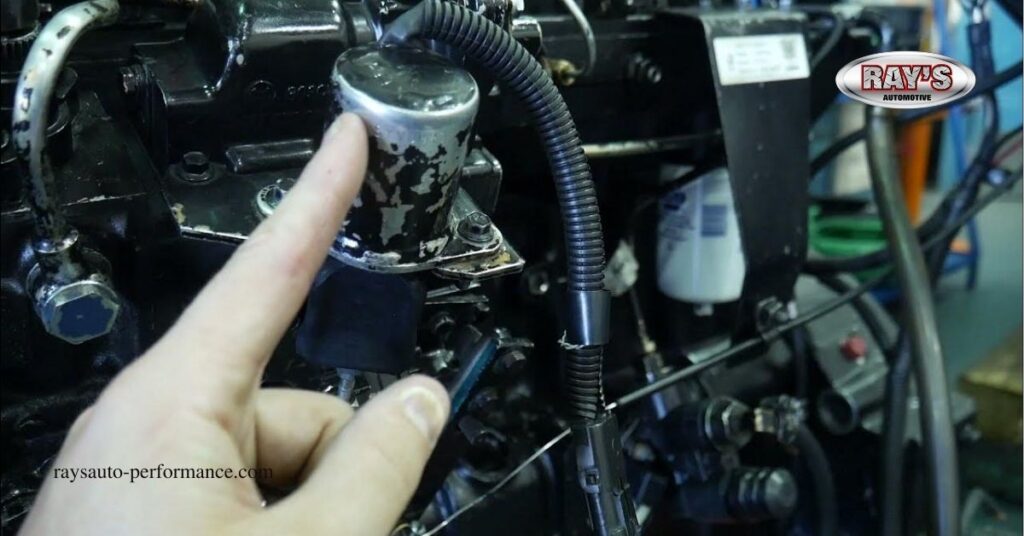If you’re a Kubota owner, you know how crucial every component is to keeping your machine running smoothly. One often overlooked part is the fuel shut-off solenoid. When it malfunctions, it can lead to frustrating performance issues and unexpected downtime. Understanding these problems is essential for maintaining your equipment’s efficiency and longevity.
Overview of Kubota Fuel Shut Off Solenoid

The fuel shut-off solenoid in your Kubota plays a crucial role in controlling fuel flow. It operates by receiving a signal from the ignition system to open or close the fuel line. A malfunctioning solenoid can lead to issues such as hard starting or even stalling.
An electrically controlled device, the solenoid typically engages when you turn the key in the ignition. When it doesn’t operate correctly, it restricts the fuel supply, causing a drop in engine performance. Identifying signs of failure is important for maintaining your equipment.
Common problems include electrical issues, such as blown fuses or corroded connections. Also, dirt and debris can hinder the solenoid’s movement. Regular inspections can catch these issues early, ensuring your Kubota runs smoothly.
You may notice symptoms like a clicking sound or an engine that won’t turn over. Ignoring these signs can lead to more extensive repairs down the line, impacting both efficiency and productivity. Understanding the importance of the fuel shut-off solenoid can help you address concerns promptly.
Common Issues Faced

Owners often encounter several issues with Kubota fuel shut-off solenoids. Addressing these problems promptly can improve overall performance and prevent further complications.
Symptoms of Malfunction
You might notice several signs indicating a malfunctioning solenoid. A clicking sound during ignition can signal an issue. Difficulty starting your engine or stalling unexpectedly also points to potential solenoid problems. If your machine experiences intermittent power loss, it could be related to the solenoid’s performance. Ignoring these symptoms might lead to more severe complications.
Causes of Failure
Several factors typically lead to solenoid failure. Electrical failures often stem from corroded connections or damaged wiring, which impacts power delivery. Blown fuses can also interrupt proper function. Dirt and debris accumulate around the solenoid over time, causing it to stick or malfunction. Regular maintenance helps reduce this risk. Coil burnout occurs due to overworking the solenoid, significantly affecting its performance. Recognizing these causes enables you to take necessary actions before issues escalate.
Troubleshooting Steps

You can take several steps to effectively troubleshoot Kubota fuel shut-off solenoid problems. These methods will help you pinpoint the issue quickly and accurately.
Inspect and Clean the Solenoid
Begin by inspecting the solenoid and the surrounding area. Look for dirt, debris, or corrosion that may affect its operation. Cleaning the solenoid enhances its performance and can resolve many common issues. Ensure that all electrical connections are clean and secure to prevent any disruptions in flow.
Check the Electrical System
A thorough check of the electrical system is essential. Using a multimeter, measure the voltage at the solenoid. Confirm that there are no problems with wiring, fuses, or connections. Corroded connections can prevent the solenoid from getting adequate power. If you find any damaged wiring or a blown fuse, these issues must be addressed to restore proper function.
Test the Solenoid
Testing the solenoid requires detaching it from the engine. Energize it using a 12-volt battery to see if it operates correctly. If the solenoid makes a rapid clicking sound, like a machine gun going in and out, it may indicate that the solenoid is defective. A proper test will reveal whether the component functions as intended or needs replacement.
How to Replace the Solenoid

Replacing the Kubota fuel shut-off solenoid requires exact tools and a methodical approach. Following these steps ensures the process is straightforward and effective.
Tools Required
Gather the following tools before starting the replacement:
- Wrench Set: Provides the necessary leverage for bolt removal.
- Screwdriver Set: Assists in accessing various screws securing the solenoid.
- Multimeter: Measures voltage and checks for electrical issues.
- Pliers: Helps in gripping and manipulating components during the process.
- Cleaning Supplies: Includes brushes or cloths for removing dirt and debris from the area.
Step-by-Step Process
- Begin by disconnecting the battery. This prevents electrical shorts and enhances safety during the process.
- Locate the fuel shut-off solenoid on your Kubota engine. It’s usually near the fuel injection pump.
- Remove electrical connections attached to the solenoid. Use the screwdriver to detach any screws holding the wiring harness in place.
- Next, take the wrench and unbolt the solenoid from its mounting. Ensure you apply steady pressure to prevent damage to surrounding components.
- Clean the area of the old solenoid thoroughly. Removing dirt and corrosion promotes proper installation of the new unit.
- Install the new solenoid by reversing the removal steps. Start with securing the mounting bolts, followed by reconnecting the electrical wires.
- Finally, reconnect the battery. Test the new solenoid by turning on the ignition to confirm it engages properly. Listen for any unusual sounds, such as clicking, which could indicate issues with the installation.
Implementing these steps maintains your equipment’s efficiency and promotes reliable performance in your Kubota machinery.
Preventive Maintenance Tips
Regular maintenance plays a vital role in keeping your Kubota’s fuel shut-off solenoid functioning optimally. Start with inspecting electrical connections frequently to identify corroded areas or damaged wiring. Corroded connections disrupt power supply to the solenoid, causing starting issues.
Cleaning the solenoid and its surrounding area helps remove dirt and debris that can lead to solenoid sticking or malfunctioning. Accumulation of dirt affects the solenoid’s movement. Schedule a cleaning routine to ensure it remains debris-free.
Monitoring the solenoid’s usage prevents coil burnout, which can disrupt fuel flow. Avoid overworking the solenoid during demanding tasks to prolong its lifespan. Keep track of operating conditions to manage workload effectively.
Supplying a consistent voltage is essential for solenoid functionality. Low voltage can prevent the solenoid from fully opening or closing, impacting its performance. Regularly test voltage levels at the solenoid to maintain proper operation.
Consider performing periodic performance tests. Energize the solenoid with a 12-volt battery when detached from the engine, listening for rapid clicking sounds that indicate a defect. Early detection of issues can save on extensive repairs down the line.
Implementing these maintenance practices ensures reliable performance and enhances the longevity of your equipment. Prioritize these tips to maintain your Kubota machine’s efficiency.
Conclusion
Understanding the fuel shut-off solenoid’s role in your Kubota equipment is essential for optimal performance. By recognizing potential problems and their symptoms early on, you can prevent costly repairs and downtime. Regular inspections and maintenance will help keep your solenoid functioning smoothly, ensuring reliability in your machinery.
If you encounter issues like hard starting or unusual clicking sounds, don’t hesitate to troubleshoot or replace the solenoid. Taking proactive steps will not only enhance your equipment’s efficiency but also extend its lifespan. Stay vigilant and maintain your Kubota to ensure it serves you well for years to come.
Frequently Asked Questions
What is a fuel shut-off solenoid, and why is it important for Kubota owners?
The fuel shut-off solenoid controls the fuel flow in Kubota machines by opening or closing the fuel line based on signals from the ignition system. It’s crucial for smooth operation; malfunctioning solenoids can lead to performance issues and unexpected downtime, affecting productivity and equipment longevity.
What causes a fuel shut-off solenoid to malfunction?
Common causes of solenoid malfunction include electrical failures due to corroded connections, dirt accumulation interfering with movement, and coil burnout from overuse. Regular maintenance and inspections can help prevent these issues and ensure proper functionality.
How can I tell if my fuel shut-off solenoid is failing?
Symptoms of a failing solenoid include a clicking sound during ignition, difficulty starting the engine, stalling, and intermittent power loss. If you experience these issues, it’s essential to address them promptly to prevent more extensive damage.
What steps should I take to troubleshoot a solenoid problem?
To troubleshoot, first inspect and clean the solenoid and surrounding area of dirt and corrosion. Next, check the electrical system for voltage and secure connections. You can also test the solenoid by energizing it with a 12-volt battery. A rapid clicking sound typically indicates a defect.
How do I replace a fuel shut-off solenoid in my Kubota?
To replace the solenoid, disconnect the battery, locate and remove the old solenoid’s electrical connections and bolts, clean the area, and install the new unit by reversing the steps. Reconnect the battery and test the new solenoid to confirm it operates correctly.
What preventive maintenance should I perform on my fuel shut-off solenoid?
Regularly inspect electrical connections for corrosion, clean the solenoid and surrounding areas to prevent sticking, and monitor usage to avoid coil burnout. Periodic performance tests can also help catch early issues and maintain optimal solenoid functionality.

